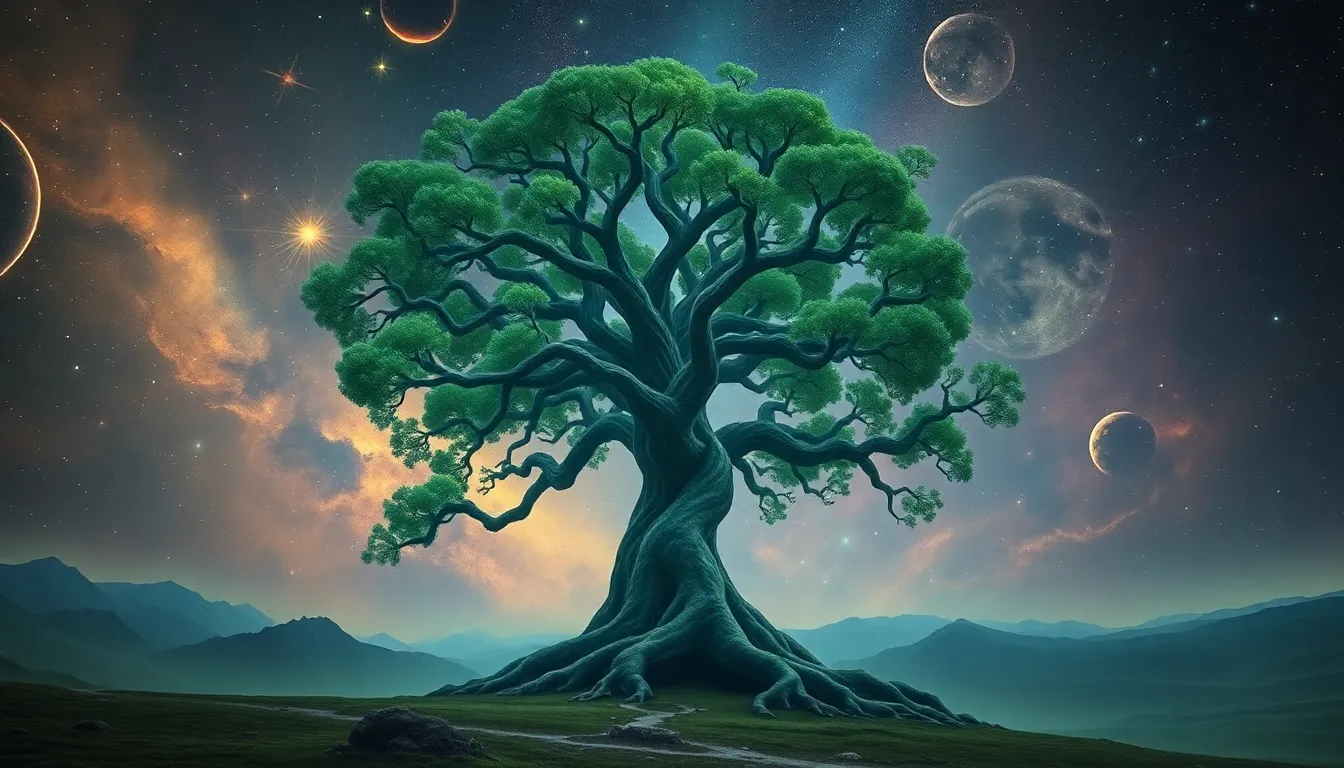The Enchanted Oak: Myths of the Sacred Tree
Introduction to the Enchanted Oak
The oak tree, a majestic symbol of strength and longevity, has held a significant place in the hearts and minds of various cultures throughout history. From ancient civilizations to modern societies, the oak represents endurance, resilience, and a deep connection to nature. The concept of the “enchanted oak” emerges as a mythical entity, embodying not just the physical characteristics of the tree, but the cultural and spiritual significance it holds across different traditions.
Historical Significance of Oak Trees
Throughout history, oak trees have been revered by numerous civilizations. In ancient Greece, the oak was sacred to Zeus, the king of the gods, and was often associated with lightning and strength. The Romans also held the oak in high regard, using its wood for building and rituals. In Norse mythology, the oak was linked to Thor, the god of thunder.
The oak tree’s presence in folklore and mythology can be seen in various cultures:
- Greek Mythology: Oak trees were seen as oracles, with their leaves whispering secrets of the divine.
- Native American Traditions: Many tribes viewed the oak as a source of sustenance and spiritual protection.
- Celtic Beliefs: The oak was a symbol of strength and the connection between the earth and the heavens.
The Oak in Celtic Mythology
Celtic culture placed a profound significance on oak trees, viewing them as sacred entities. The Druids, the priestly class in ancient Celtic societies, often conducted rituals and ceremonies around oak groves, believing these trees were gateways to the Otherworld.
Legends abound regarding the oak tree’s mystical qualities. One popular story tells of how the Druids would gather under the oak during the summer solstice to celebrate fertility and the cycle of life. They believed the oak was a protector of the land, and its presence ensured prosperity and harmony with nature.
The Enchanted Oak in Native American Traditions
In Native American cultures, the oak tree holds diverse symbolism, varying among tribes. For many, the oak is a source of nourishment, shelter, and medicine. It is often regarded as a sacred tree that embodies strength and wisdom.
Myths and stories around the oak include:
- The Oak as a Teacher: Some tribes view the oak as a teacher, imparting knowledge about resilience and survival.
- Creation Myths: In certain traditions, the oak is linked to creation stories, symbolizing the interconnectedness of all life.
- Spiritual Guardianship: The presence of an oak tree is often seen as a guardian of the land, providing spiritual protection for the community.
The Oak as a Symbol of Strength and Resilience
The oak tree is synonymous with endurance in nature. Its deep roots anchor it firmly in the ground, allowing it to withstand storms and harsh conditions. This resilience has made the oak a powerful symbol in various myths and stories, emphasizing its role as a protector and guardian.
Myths that highlight the oak’s protective qualities often depict it as a refuge for weary travelers or a shelter for wildlife. In many tales, the oak is portrayed as a steadfast ally, representing hope and strength in times of adversity.
The Enchanted Oak in Literature and Art
Throughout literature and art, the enchanted oak has been depicted as a symbol of mystery and magic. Famous literary works featuring enchanted oaks include:
- Shakespeare’s “A Midsummer Night’s Dream”: The enchanted forest, where magic and reality intertwine, is heavily influenced by the presence of ancient trees.
- J.R.R. Tolkien’s “The Lord of the Rings”: The Old Forest, inhabited by ancient trees, plays a significant role in the journey of the characters.
In art, the oak tree has been a muse for many artists, symbolizing life, growth, and the passage of time. From classic paintings to modern sculptures, the oak continues to inspire creativity and reflection.
Modern Interpretations of the Enchanted Oak
In contemporary culture, myths surrounding the enchanted oak continue to thrive. The oak tree often appears in modern fantasy literature and films as a symbol of ancient wisdom and magical realms. Many authors and filmmakers draw upon the rich traditions associated with the oak to create compelling narratives that resonate with audiences today.
Moreover, the enchanted oak serves as a reminder of the importance of nature in our lives, encouraging a reconnection with the environment and the sacredness of trees.
Ecological Importance of Oak Trees
Beyond their cultural and mythical significance, oak trees play a crucial role in ecosystems and biodiversity. They provide habitats for numerous species of birds, insects, and mammals. The acorns produced by oak trees are a vital food source for wildlife, including deer, squirrels, and birds.
Conservation efforts are essential to protect these sacred trees and their ecosystems. Initiatives aimed at preserving oak habitats include:
- Restoration of oak woodlands.
- Community engagement and education on the importance of oak trees.
- Protection of ancient trees from deforestation and urban development.
Personal Experiences and Anecdotes
Many individuals have shared personal experiences with enchanted oaks, recounting moments of tranquility and inspiration found beneath their branches. Stories often reflect a deep emotional and spiritual connection to these trees, describing them as places of solace and reflection. Some have reported feeling a sense of protection while sitting under an oak, while others have experienced moments of clarity and guidance.
Conclusion: The Legacy of the Enchanted Oak
The enduring myths of the enchanted oak remind us of the profound connections we share with nature. These stories, rich in history and cultural significance, continue to inspire individuals to explore their relationships with sacred trees and the natural world. As we reflect on the legacy of the enchanted oak, we are encouraged to nurture our connections with nature and recognize the importance of protecting these magnificent trees for future generations.



